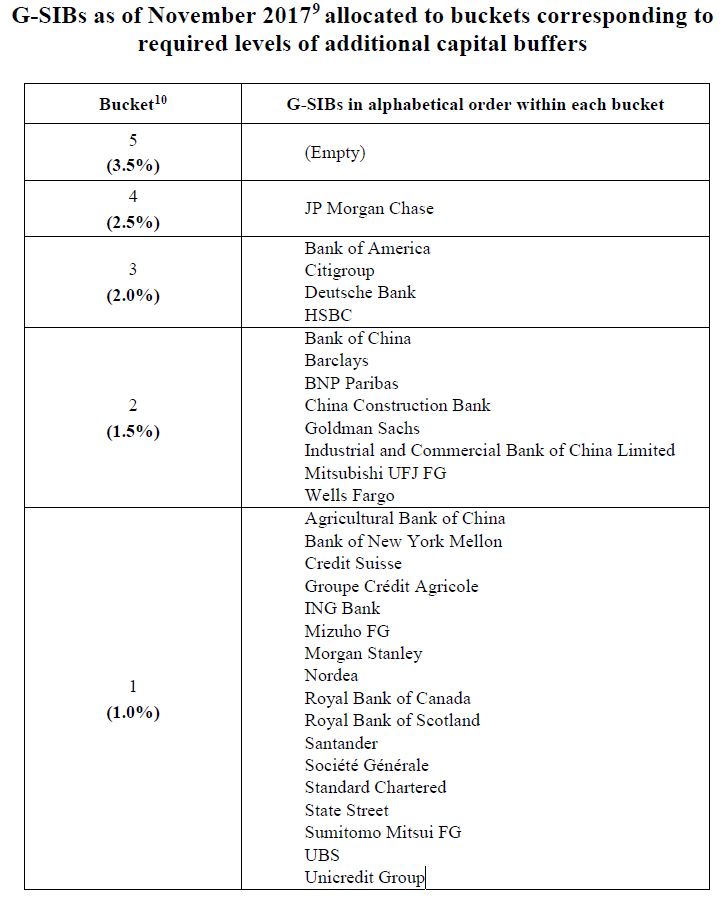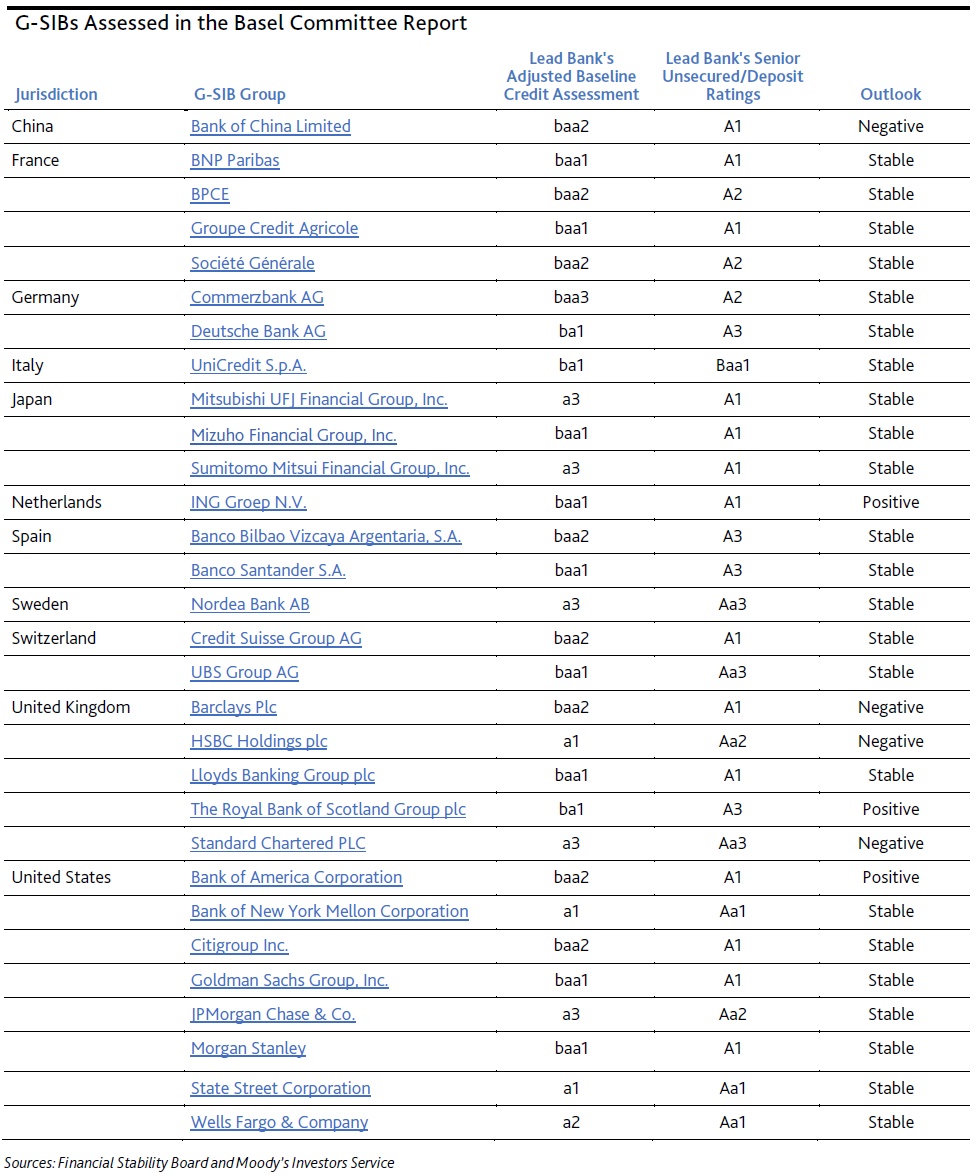The Financial Stability Board (FSB), in consultation with Basel Committee on Banking Supervision (BCBS) and national authorities, has identified the 2017 list of global systemically important banks (G-SIBs), using end-2016 data and the updated assessment methodology published by the BCBS in July 2013. One bank has been added to and one bank has been removed from the list of G-SIBs that were identified in 2016, and therefore the overall number of G-SIBs remains 30.
FSB member authorities apply the following requirements to G-SIBs:
Higher capital buffer: Since the November 2012 update, the G-SIBs have been allocated to buckets corresponding to higher capital buffers that they are required to hold by national authorities in accordance with international standards. Higher capital buffer requirements began to be phased in from 1 January 2016 for G-SIBs (based on the November 2014 assessment) with full implementation by 1 January 2019. The capital buffer requirements for the G-SIBs identified in the annual update each November will apply to them as from January fourteen months later. The assignment of G-SIBs to the buckets, in the list published today, determines the higher capital buffer requirements that will apply to each G-SIB from 1 January 2019.
Total Loss-Absorbing Capacity (TLAC): G-SIBs are required to meet the TLAC standard, alongside the regulatory capital requirements set out in the Basel III framework. The TLAC standard will be phased-in from 1 January 2019 for G-SIBs identified in the 2015 list (provided that they continue to be designated as G-SIBs thereafter).
Resolvability: These include group-wide resolution planning and regular resolvability assessments. The resolvability of each G-SIB is also reviewed in a high-level FSB Resolvability Assessment Process (RAP) by senior regulators within the firms’ Crisis Management Groups.
Higher supervisory expectations: These include supervisory expectations for risk management functions, risk data aggregation capabilities, risk governance and internal controls.
 9 Compared with the list of G-SIBs published in 2016, the number of banks identified as G-SIBs remains the same. One bank (Royal Bank of Canada) has been added to and one bank (Groupe BPCE) has been removed from the list. Two banks moved to a higher bucket: both Bank of China and China Construction Bank moved from bucket 1 to 2. Three banks moved to a lower bucket: Citigroup moved from bucket 4 to 3, BNP Paribas moved from bucket 3 to 2, and Credit Suisse moved from bucket 2 to 1.
9 Compared with the list of G-SIBs published in 2016, the number of banks identified as G-SIBs remains the same. One bank (Royal Bank of Canada) has been added to and one bank (Groupe BPCE) has been removed from the list. Two banks moved to a higher bucket: both Bank of China and China Construction Bank moved from bucket 1 to 2. Three banks moved to a lower bucket: Citigroup moved from bucket 4 to 3, BNP Paribas moved from bucket 3 to 2, and Credit Suisse moved from bucket 2 to 1.
10 The bucket approach is defined in Table 2 of the Basel Committee document Global systemically important banks: updated assessment methodology and the higher loss absorbency requirement, July 2013. The numbers in parentheses are the required level of additional common equity loss absorbency as a percentage of risk-weighted assets that each G-SIB will be required to hold in 2019.
A new list of G-SIBs will next be published in November 2018


